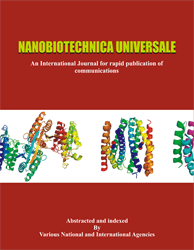DNA Barcoding and phylogenetic analysis of fish Oreochromis mossambicus from Mallapura Lake, Chitradurga, India
C. N. Venksatesh, *Shashikanth H. Majagi, Rabiya Begum and Shahanawaz Ahemad
1,2*Department of Studies in Zoology, Vijayanagar Sri Krishnadevaraya University, Ballari - 583105 (India) 3,4Department of Zoology, Tumkur University. Tumkur - 572103 (India) Email: smajgi@rediffmail.com *Corresponding author
ABSTRACT
India is one of the major contributors for fish biodiversity and these are largest group of organisms which shows varied phenotypical changes throughout the development. The Chitradurga region forms a continental bridge between the Vedavathi River & Krishna River basin. Hence, fresh water fauna in Mallapura lake consist of unique populations of species that originates from different range of distributions. The identification & discoveries of new species can be made easily through barcoding technique. Leading to resolve traditional morphological taxon identification for overlapping sister species. The present study aimed to apply the same technique of mitochondrial cytochrome oxidase I gene for accuracy with identification.The tilapia fish samples were collected from Mallapura lake, and DNA amplification results showed COI gene fragment sequences, characterized by a length of 654 base pairs. The nucleotide composition, polymorphic sites, haplotype grouping, BLAST analysis, and phylogenetic tree constructed by collected individual were used to categorize the samples into Oreochromis mossambicus species. The results indicated DNA barcodes as an effective identification approach for tilapia fish, and the results have a potential for application in aquaculture and during the management of fisheries resource in India. The detailed investigation provides a barcoding database and promotes further studying of the fish species in the region and their ecology with emphasis on monitoring and conservation of freshwater fish biodiversity.
